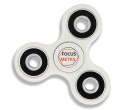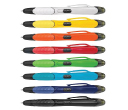5 Game Changing Consumer Shifts
Are consumers changing? Are they less materialistic and what does that mean for marketers? These are among the ideas explored by futurist Andy Hines in his recent book “Consumer Shift: How Changing Values Are Reshaping the Consumer Landscape.”
Hines challenges many traditional marketing assumptions about consumers “wanting it all” and “more is always better.”
 Hines says what consumers value is changing. “Understanding these changes will provide critical insight for understanding the future consumer landscape and designing products, services, and offerings that fit.,’” he explained. “The book translates the values changes into seven emerging need states, brought to life in the form of seven future personas, and provides a persona customization kits for those who want to tailor them to their specific needs. It will help you and your team make sense of rapidly changing consumer behavior – where they are coming from, where they are going, and what they are looking for.”
Hines says what consumers value is changing. “Understanding these changes will provide critical insight for understanding the future consumer landscape and designing products, services, and offerings that fit.,’” he explained. “The book translates the values changes into seven emerging need states, brought to life in the form of seven future personas, and provides a persona customization kits for those who want to tailor them to their specific needs. It will help you and your team make sense of rapidly changing consumer behavior – where they are coming from, where they are going, and what they are looking for.”
A Case for Shift
According to Hines, there has been a slow long-term movement from traditional to modern to postmodern to integral. ConsumerShift focuses on the newer types, postmodern and integral, and demonstrates how their emergence is reshaping the consumer landscape. The values shifts are leading to five key themes of change, making a case for the consumer shift (note the acronym “A CASE”):
- Authenticity: needs to permeate the entire culture of organizations from the executive leadership all the way down to ingredients and processes used
- Connection: especially for larger organizations, how to balance the advantages of [large] scale with the need for greater participating at the individual community level; one of the interesting potential technology enablers of this could be 3D printing for local production.
- Anti-consumerism: the term consumer implies treating people as statistics or data point, which is a huge turn-off; people recognize they must consume, but don’t see that as defining who they are; want to be treated as individuals
- Self-expression: dealing with the Long Tail as the new norm – markets of one, which implies a need for providing real input for customers; breaking down the “us and them” distinction
- Enoughness: selling less stuff, but opportunities for higher-value added relationship building and the story or credentials of the offering, e.g., strong sustainability credentials, unique local origins, etc.
Consumer a Dirty Word?
“Thus a key challenge is emerging in that these “consumers” don’t want to be thought of primarily as consumers. It’s not that they no longer want to buy goods and services, but they want to reconfigure or rebalance the relationship between buyer and seller,” Hines says. “They don’t want things they don’t need and are scrutinizing just what they do need. They don’t want buyers pushing, marketing, spinning, and hard-selling. They see a difference between transactions and relationships. They want an authentic connection and they want their viewpoint to be acknowledged.”


















